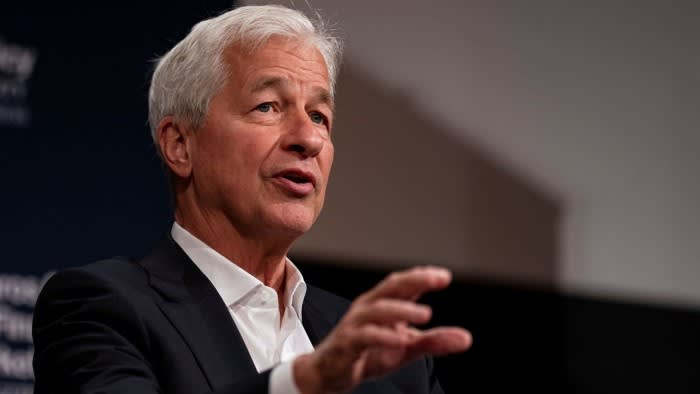Unlock the Editor’s Digest for free
Roula Khalaf, Editor of the FT, selects her favourite stories in this weekly newsletter.
In 2022 there were about 4,500 insured banks, according to the US Federal Deposit Insurance Corporation. In the mid-1990s there were about 10,000. And depending on your perspective, that process of consolidation is either a good start or a nightmare that needs to be halted.
The US Department of Justice on Tuesday withdrew its 1995 bank merger guidelines which largely focused on deposit or branch concentration as a reason to block mergers. The new guidance will mean tougher scrutiny and is part of a general US regulatory approach to think more expansively about how M&A harms a wide variety of company stakeholders.
Still, talk to Jamie Dimon and friends and they point out that banking is a classic scale game where stability, safety and, yes, returns on equity are helped by having fewer institutions.
Bank M&A has been pretty tough to get done since the financial crisis — and virtually impossible for the large banks with more than $100bn of assets. (Ironically, standards for deal review tend to evaporate when banks are in the process of failing and need a buyer, any buyer. Think JPMorgan taking on the besieged First Republic in 2023).
The DoJ says regulators must consider the competitive impact on banking product markets and customer segments as well as how communities would have to be better served after the merger.
Critics argue that an overly fragmented market means undersized lenders are often undermined by insufficient capital, leading to broader bank panics and crises. As such, a better way to ensure that credit remains broadly accessible might be to focus on what the capital ratios of merged banks look like.
The typical bank has a return of assets of just 1 per cent, with institutions meeting their cost of equity almost solely through leverage. The costs of compliance, marketing and customer service, to say nothing of even minimal loan losses, are acute for smaller institutions. When banking executives argue for consolidation, it is less about monopoly rent-seeking and more about survival.
In the past 30 years, consumer finance has changed too. Many mortgage, credit card and personal loan companies are now “shadow banks” that do not take formal deposits. Similarly, fintech upstarts use technology to avoid setting up branches.
Add in the proliferation of asset managers getting into corporate lending, and the traditional banking sector seems as cut-throat as ever. Regulators’ harder task, and the more important one, is understanding how all these forms of financial intermediation can fit together for the benefit of customers.
sujeet.indap@ft.com

